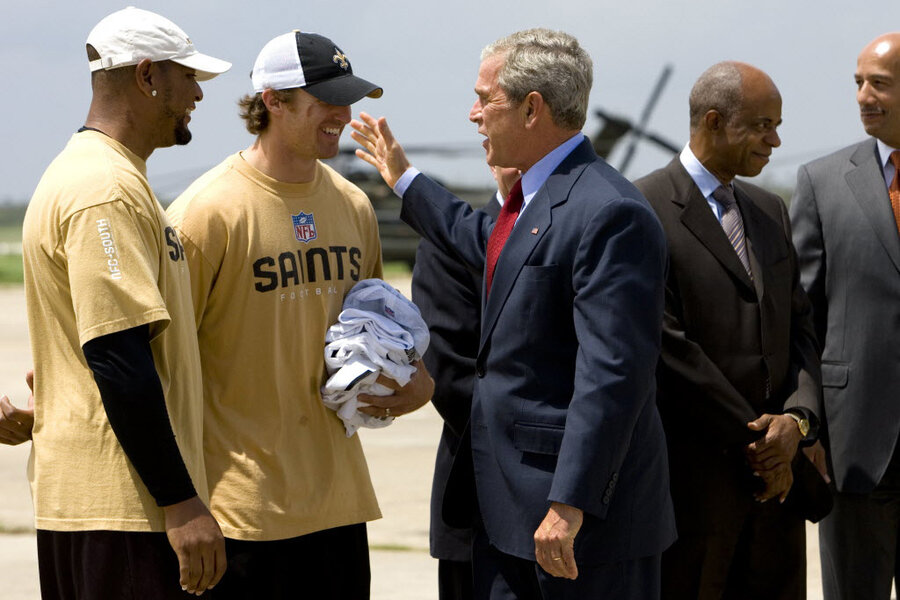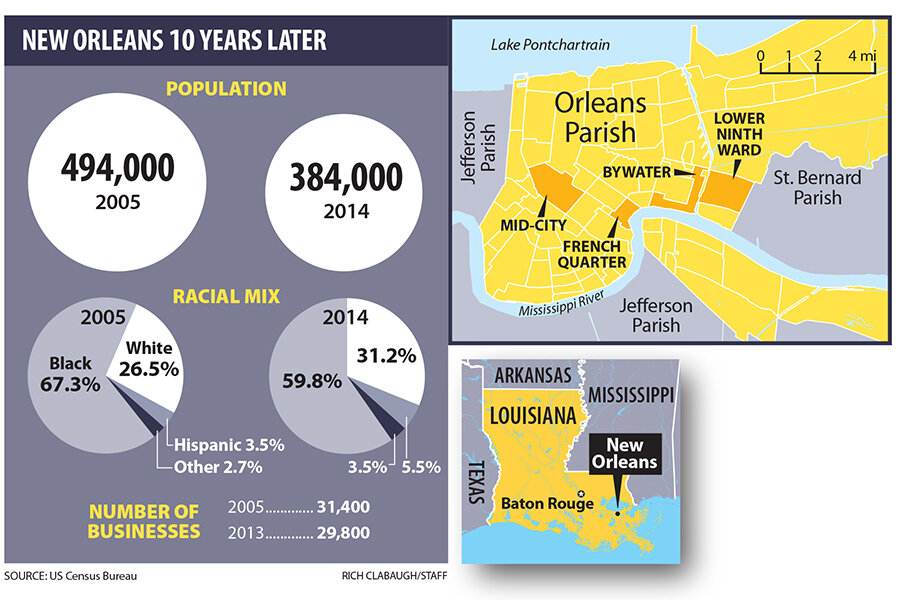Bush heads to The Big Easy for 10th anniversary of hurricane Katrina
Loading...
Former President George W. Bush is visiting New Orleans on Friday to commemorate the 10th anniversary of Katrina, the 2005 hurricane that claimed the lives of 1,800 people and destroyed 100,000 homes.
The hurricane is widely regarded also as one of the "lowest of points" in Mr. Bush’s eight-year presidency.
The Associated Press describes the former commander-in-chief’s response to Katrina as “a series of faux pas – from flying over flooded New Orleans first on Air Force One to his ‘Heckuva job, Brownie’ quip in support of then-director of the Federal Emergency Management Agency, Michael Brown.”
Bush will speak at Warren Easton Charter High School, the same school he chose to deliver remarks on the first anniversary of the storm. His wife, Laura, is credited with helping rebuild Warren Easton, the city’s oldest public high school.
Back in 2006, the school was severely flooded and struggling to reopen. School officials said that nearly every student at the time was considered homeless, as they were living in FEMA trailers or sleeping on couches.
Bush, who was chastised for leaving the efforts of rebuilding a city hit by the country’s most expensive natural disaster to locals, began experiencing a downward slide in his approval ratings.
He became a subject of public resentment and mockery in New Orleans, displayed in effigies at the city’s carnival for years, according to The Telegraph.
Bush’s office has pushed back against the criticism, saying it oversaw more than $140 billion on disaster relief.
Arthur Hardy, a local celebrity in New Orleans who graduated from Warren Easton in 1965, told the AP that the community had “fond memories of his last visit,” adding that Bush had helped the school reopen after the hurricane.
President Obama on Thursday also visited The Big Easy to praise the city’s revival. "There's something in you guys that is just irrepressible," he told a crowd of residents at a new community center in the Lower 9th Ward. “The people of New Orleans didn't just inspire me, you inspired all of America.”
For an in depth look at New Orleans' decade of recovery, see The Christian Science Monitor's cover story, "Ten years after Katrina, a 'new' New Orleans emerges."
This report contains material from the Associated Press and Reuters.







